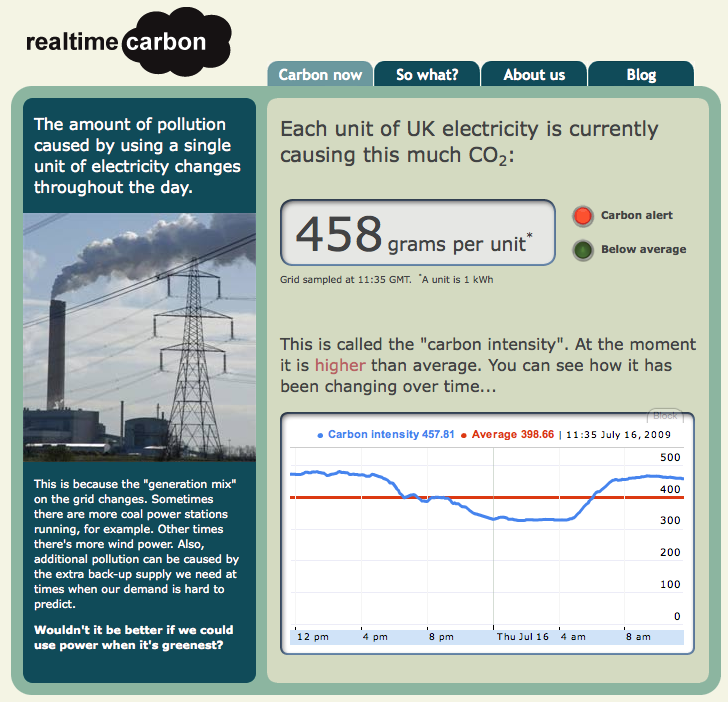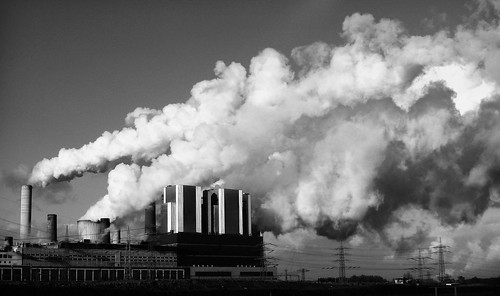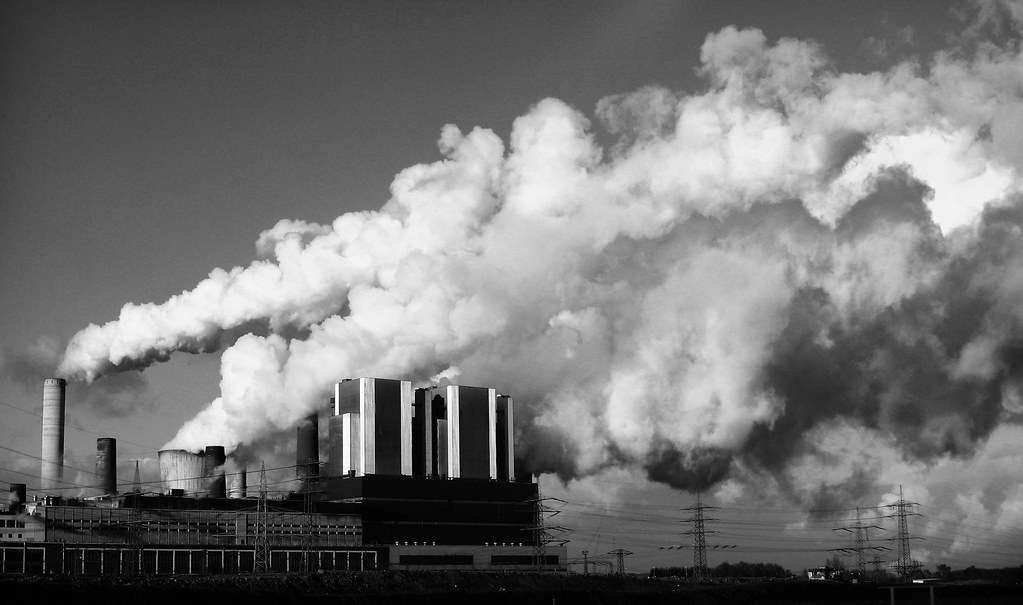If you actively select for cheaper electricity, you are de facto selecting for greener electricity because cheaper electricity has a higher % of renewable energy in the mix.
I wrote previously that it would be great if utility companies were mandated to publish realtime generation mix (% from coal, % for nuclear, % from wind, etc.).
Then if you had a truly open market for electricity, it should be possible to dynamically switch suppliers on the fly, based on the price and the realtime generation mix. If people were actively selecting for greener electricity (and given that cheaper electricity typically has a higher % of green, why wouldn’t they?), imagine the demand signal that would send to the suppliers! There would be an enormous rush to build more renewables and Kingsnorth would be shelved quicker than you can say “dirty coal”.
That idea is a step closer to reality today with the launch in the UK of RealtimeCarbon.org. This is a site which gives a realtime feed of just how “carbon intense” UK electricity is at any given moment. The data behind the real time feed comes directly from the computer systems that manage the UK’s electricity trading market. This data tells RealtimeCarbon.org how much electricity each type of power generator (e.g. coal power stations or wind farms) are currently producing during any particular 5-minute interval.
One of the beauties of this site is that they provide an xml feed of the realtime carbon intensity data (see the pdf on how to access the feed for more info). The xml feed will allow organisations to programatically monitor the CO2 emissions associated with electricity generation in the UK. Thus it will be possible to have devices programmed to automatically respond to realtime CO2 intensity signals coming from RealtimeCarbon.org i.e. shutting down when highly carbon intensive and starting up when carbon-light. This will be a big help in reducing the organisation’s carbon footprint.
RealtimeCarbon.org also has a forum where people can get involved suggesting methodology improvements, ways to improve the numbers (calculation or display) and how to use the data.
Now they just need to build this out for every other country on the planet!
[Disclosure – one of the companies involved in this project (AMEE) is a GreenMonk client]
Related articles by Zemanta
- Carbon reductions: how the power sector will be affected (telegraph.co.uk)
- Labour orders green energy revolution (guardian.co.uk)
- Green energy is great but we need investment to keep the lights on (telegraph.co.uk)
- Miliband unveils low-carbon strategy (guardian.co.uk)






